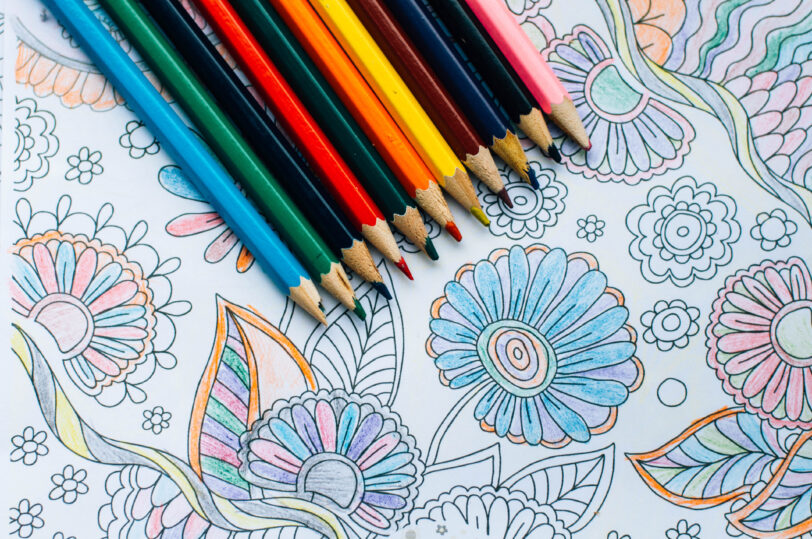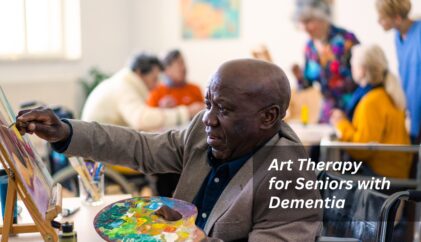
While the first commercial adult coloring books were published in 2012, the benefits of art and color have been studied for decades. Carl Jung studied the effect of color and how it can be used to relieve stress and anxiety.
Coloring is not just for kids!
As a child, I found few things more exciting than cracking open a new (cardboard) box of Crayola crayons (yes, I am a snob and it has to be Crayola brand). There was something about seeing the perfect colored points all lined up in their little compartments, coupled with inhaling the smell of the crayons. Oh, memories…that are not just memories for me, as coloring is a part of my weekly, and sometimes daily, routine, as an adult. Hear me out - coloring is NOT just for kids! With countless health benefits, it should not come as a surprise that the adult coloring trend has exploded nationwide. Yes, children’s coloring books are designed to allow children to develop creativity, fine motor skills, and color between (or outside!) the lines, but adult coloring books have a more specific purpose in mind - fostering health and wellness.
While the first commercial adult coloring books were published in 2012, the benefits of art and color have been studied for decades. Carl Jung studied the effect of color and how it can be used to relieve stress and anxiety. He stated, “Colour is the mother tongue of the subconscious.” Jung's studies demonstrated that our bodies respond to color stimuli, which soon led to the development of art therapy. His work evidenced that expressing oneself through images and colors allows people to recover from distress and trauma.
Additional research in 2005 suggested that anxiety levels drop significantly when subjects colored mandalas (geometric patterns typically housed in round frames). The results indicated that the practice of coloring created a meditative state that is beneficial when attempting to reduce anxiety. Why is this? This pastime is designed to refocus one’s attention, bring about a sense of pleasure and calm, and induce relaxation.
Allow me to share some of the incredible benefits of coloring.
- Reduce Stress and Anxiety
Functioning as the fear center, our amygdala works overtime during the day - constantly trying to parse out if the stress/anxiety about public speaking reaches the same level of potential danger as a dinosaur coming to attack. Coloring relaxes the amygdala! It functions similarly to meditation by allowing your brain to quiet and reduce all unwanted thoughts and be present, which alleviates free-floating anxiety. This quietness will allow the mind to be still and get some much-needed rest and peace after a long day of work (and thought). - Improve Sleep
Using electronics before bed often creates less restful sleep. It is difficult to turn off our brains when they are stimulated with lights, tik tok videos, and reels that have us scrolling (and laughing). Why? This exposure to the screens reduces the body’s level of melatonin. Coloring, on the other hand, will not impact the melatonin in your system and is therefore an electronic-free, relaxing way to wind down before sleep. That said, I do strongly recommend removing your crayons or colored pencils from your bed before attempting to switch off for the night. I may have a bit of experience waking up to melted crayons on my sheets (which, while pretty, was not fun to clean up)! - Improve Focus
While coloring does require a bit of focus, it does so in a non-stressful way. Instead of making your brain hurt as you scrutinize the details and identify elements for criticism and perfection as you do all day long, coloring opens up your frontal cortex. By releasing its grip on the need to problem solve and organize, it shifts and allows you to be present and live in the moment. As Jung demonstrated, coloring allows your brain to replace negative and troubling thoughts, and focus on the positive, calming elements of sitting still in the present moment. - No Expectations Increase Pleasure
Guess what? Contrary to the world in which we live, there are no rules when it comes to coloring - not a single one! Go ahead, color outside the lines. Not your style? Color, shade, scribble - there is no prescriptive way to color, no pass nor fail mark, just you. It can be as neat or as messy as you choose. This is one of the best perks because there are no expectations - it is simply relaxing. A wonderful way to escape, rather than holding yourself accountable to a standard designed to test your ability and make you feel not good enough. I promise, your coloring is more than good enough!
You don’t have to be an expert artist to color - heavens knows I am not! If you are looking for an easy and uplifting way to unwind after a stressful day, putting crayons (colored pencils, markers, oil pastels) to paper might just be your magic ticket. Below are links to some free coloring pages - though, I will say, depending on my mood, I like some of the coloring books that have more, colorful language, shall we say? While it would be unprofessional for me to link that here, I do encourage you to review additional adult coloring options on amazon.
So, what are you waiting for? Get Scribbling!
Links to free coloring pages:
https://www.crayola.com/free-coloring-pages/adult-coloring-pages/
https://www.happierhuman.com/stress-coloring-pages/
https://www.justcolor.net/
https://www.thebalance.com/free-mandala-coloring-pages-4027232
Links to adult coloring applications:
https://diycandy.com/best-adult-coloring-apps/
References:
Curry, N. A. & Kasser, G. (2005). Can Coloring Mandalas Reduce Anxiety? Art Therapy: Journal of the Art Therapy Association, 22, 81-85.
Carl Jung, the collected works. Retrieved 10/30/22 from: https://iaap.org/resources/academic-resources/collected-works-abstracts/volume-9-1-archetypes-collective-unconscious/
Malchiodi, C. (2010). Cool art therapy intervention #6: Mandala Drawing. Retreived from web: Psychology Today on 10/22/22 from https://www.psychologytoday.com/us/blog/arts-and-health/201003/cool-art-therapy-intervention-6-mandala-drawing
Dr. Joy Nadler Frankel is the National Clinical Director for CHE. She has been part of the CHE family for close to 13 years. In her spare time, she enjoys being with her family, long walks on the beach, cooking, baking, and playing the piano.



